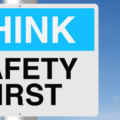You’ve decided to sell your RV. In theory, it sounds easy enough, but it can be overwhelming and daunting in the harsh light of day. Follow these 9 Tips for Selling an RV for Top Dollar to make the process easier and ensure you receive the full value for your memory maker.
- Be realistic. From setting the price or determining the value of your unit to how long it will take to sell. Being realistic in your expectations will prevent a lot of frustration.
- Determine the “why” for the sale. Is this a distress sale that is being forced due to job loss or loss of income? If so, a lower starting price or including value-added items such as the stinky slinky (poop pipe), snap pads, grill, chairs, and other items you purchased for the unit that you don’t need any longer. This will save the buyer some money and add value to the sale. If you are selling for another reason and have more time, a higher asking price could be well worth the wait.
- Are you upgrading to a larger, newer, or different model? If so and are purchasing from a dealer, be sure to ask them to appraise the unit for trade-in value. A dealership valuation will give you the baseline value for your unit. One advantage to consider with trading-in the unit is that you reduce the sales tax amount on the new unit.
- CLEAN! Whether you are asking a dealership for an appraisal or selling privately, make sure the unit is clean and tidy. Remove as many personal items as possible. Wipe down all the cabinets and ceiling. Check the nooks and crannies for dirt, hair, and other build-ups. Savvy buyers and inspectors will check these areas and look at the little things to test your attention to detail. Ensure the black tank is flushed and treated correctly to avoid sewer smells. Don’t forget to vacuum out the storage bays which are often overlooked. Wash windows inside and out as well as the outside of the unit. Always make a great first impression!
- Stay up to date with scheduled maintenance and needed repairs. Up-to-date maintenance shows a buyer that you’ve cared for the unit. Additionally, they won’t have to come out of pocket right away for any maintenance. If repairs are needed but not enough time to complete, disclose it upfront. Provide an estimate for the work and reflect the cost of the repairs in the asking price.
- Write a thoughtful and detailed description of the unit. Many listings lack a lot of basic information. Be sure to include as much detail as possible. The basics such as year, make, model, color, description of the unit are essential. Further include any extras, upgrades made, floorplan features, and the technical specs (engine size, horsepower, chassis, generator, etc). Be sure to include the year of the tires and batteries, maintenance history (brief overview), and any needed repairs. Rule of thumb, write the ad for yourself. Include the details you would want to know about the unit if you were buying it.
- Take great pictures. It’s amazing how many ads have terrible pictures. All pictures should be clear and taken in the correct aspect. For the best representation of your unit, take pictures fully set up – slides out, window shades/drapes open, lights on, TVs on with a generic image, bed made and all clutter and personal stuff removed. Be sure to include pictures f storage bays, tires with tread, engine and generator compartments as well as the batteries. Take outside pictures on a nice sunny day right after washing. Take front, back, and both sides and several angles that highlight the best features of your unit. If you have an outdoor kitchen or entertainment area, open them up and snap away. No one will ever tell you there were too many pictures in your ad. If you are going to take a video, make sure to shoot the video with your phone turned on its side (landscape mode) so that it displays wide/full screen on other devices. Give a brief commentary while you shoot the video so viewers know what they are looking at. Take your time, talk slowly and open doors, cupboards, storage areas. If you have it, include the build sheet for your unit as well as a copy or picture of the sales sticker.
- Do your homework! Check online sites such as RV Trader, Facebook Marketplace, and local dealerships inventory to determine the price range for the same year, make and model. Be sure to note optional extras on the pricing as well as colors that could affect the price and overall value. For example, if your unit has a lot of upgraded extras then pricing at the higher end of the market is justified. Don’t forget to consider the condition of your model compared to others on the market. Do you have viable wear and tear on seating and other surfaces? Previous leak damage? Body damage? Older tires? All of these things affect the value of your unit not only in a private sale but for trade-in as well.
- Honesty is the best policy! Disclose any issue(s) with your unit, the history of repairs as well as any needed maintenance. Most buyers will want to have a professional inspection done of the unit prior to purchase. This inspection will uncover most if not all issues and if you’ve tried to cover up something it will surely lead to loss of trust and likely a missed sales opportunity. Remember the Golden Rule from Elementary School? If not, it’s due onto others as you would have them do unto you. In a nutshell, be honest about your unit and sell with integrity.
At the end of the day, selling your memory maker, the RV, takes a lot of work to make sure you earn top dollar. Following these nine tips to ensure you have positioned the RV for the best possible response and highest resell value. When in doubt, ask someone you trust to give an honest opinion about your unit, the ad you’ve written, and pictures taken. The more feedback you receive upfront, the more likely you are to succeed in the sale of your RV.
Related Articles:
Top 4 Questions When Considering an RV Purchase
Top 7 Stupid Questions People are Afraid to Ask About Owning an RV



